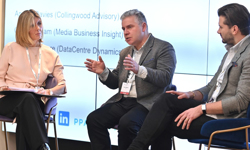As technology continues its dramatic advances, publishers are increasingly struggling to make gains in an industry that refuses to settle down.
So where is it all going next? Here are three issues that we think are going to be facing not just publishers taking their first steps in distributing their content online, but also those with years of digital experience under their belts.
1. The monetisation challenge
2015 brought its biggest ever challenge to publishers’ revenues as readers increasingly expect free content. Couple that with the decline in print circulation and the rise in popularity of ad-blockers, and we get an idea of the potentially toxic mix that is facing the industry.
Some are trying creative ways of recouping that lost revenue through digital publishing, like the Economist’s low-cost Espresso app, but others will reluctantly admit that neither apps nor social channels are delivering the cold, hard cash they need to keep going.
On the bright side, digital publishing is increasingly becoming a cost-effective option, so perhaps it won’t be long before we hit the sweet spot where publishers will see some much-deserved returns.
2. Reach and readership
Many publishers have found that digital magazine apps are far from the Holy Grail they promised to be, and are doing little to prop up the decline in print. But this is the same across every platform – long gone are the days of having everyone read just the print title. Instead, users engage with digital in the way they feel comfortable; whether that be through social media, content aggregators or apps.
It boils down to one essential point: if your articles don’t appear in the platform that those individuals are spending time in, then you won’t reach them.
Strategies for dealing with this are unique to each publisher. Large publishers can spend vast resources on experimenting to see what works with their readers, but small publishers should remember that many digital channels are free to use, and it’s worth spending a little time devising a strategy to see what works.
3. Keeping up
At the beginning of 2015, Apple News, Google’s AMP project and Facebook’s Notify/Instant Articles simply didn’t exist outside of Silicon Valley. Now, they’re all making a grab for publishers’ time, attention and content, with each company able to reel off a list of top publishing houses as their partners for various launches.
Keeping up with the changes and trends can seem overwhelming, especially when there’s no hard evidence to show what works. We often run free sessions to educate publishers about these changes, or you can follow our blog for news and views on industry developments.










